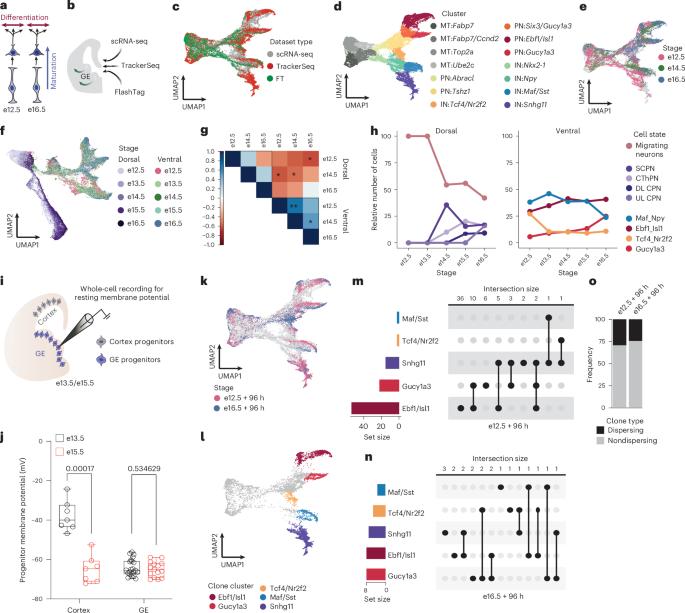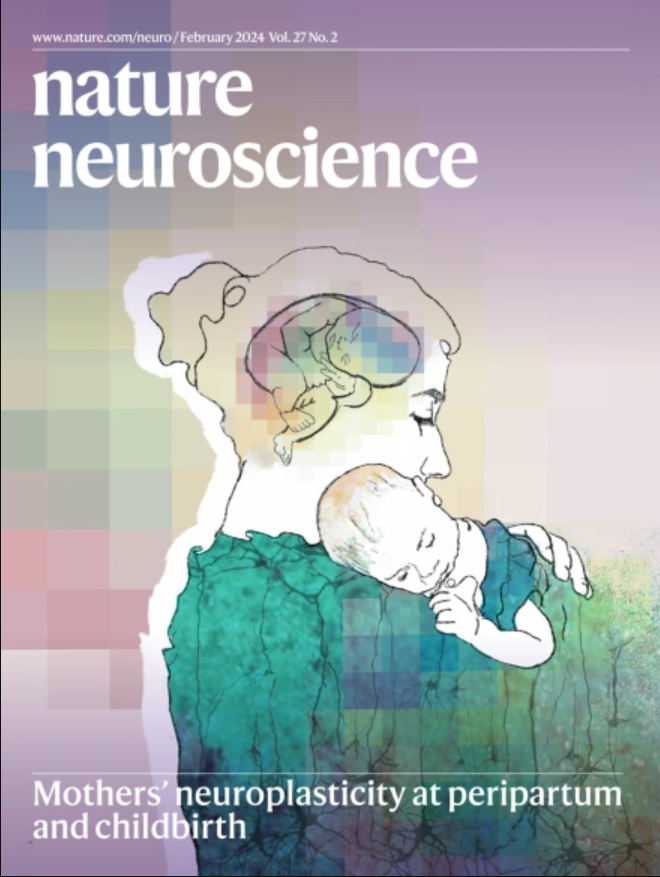Temporal control of progenitor competence shapes maturation in GABAergic neuron development in mice
IF 20
1区 医学
Q1 NEUROSCIENCES
引用次数: 0
Abstract
Diverse types of GABAergic projection neuron and interneurons of the telencephalon derive from progenitors in a ventral germinal zone called the ganglionic eminence. Using single-cell transcriptomics, chromatin accessibility profiling, lineage tracing, birthdating, transplantation across developmental stages and perturbation sequencing in mouse embryos, we investigated how progenitor competence influences the maturation and differentiation of these neurons. We found that the temporal progression of neurogenesis shapes maturation competence in ganglionic eminence progenitors, influencing how their progeny progress toward mature states. By contrast, differentiation competence—defined as the ability of progenitors to produce diverse transcriptomic identities—was maintained throughout neurogenesis. Chromatin remodeling, together with a regulatory module composed of the transcription factor NFIB and its target genes, influenced maturation competence in late-born neurons. These findings reveal how transcriptional programs and chromatin accessibility govern neuronal maturation and the diversification of GABAergic neuron subtypes during neurodevelopment. Unlike cortical progenitors, ventral telencephalic progenitors retain the ability to generate diverse neuron types during neurogenesis. Here, the authors show that ventral telencephalic progenitor maturation is gated by developmental timing, revealing a distinct regulatory logic underlying the development of inhibitory neurons.


祖细胞能力的时间控制决定了小鼠gaba能神经元发育的成熟
端脑的gaba能投射神经元和中间神经元的不同类型来源于被称为神经节隆起的腹侧生发带的祖细胞。利用单细胞转录组学、染色质可及性分析、谱系追踪、出生测定、跨发育阶段移植和小鼠胚胎的扰动测序,我们研究了祖细胞能力如何影响这些神经元的成熟和分化。我们发现神经发生的时间进展决定了神经节隆起祖细胞的成熟能力,影响了它们的后代如何向成熟状态发展。相比之下,分化能力——被定义为祖细胞产生不同转录组特征的能力——在整个神经发生过程中保持不变。染色质重塑与由转录因子NFIB及其靶基因组成的调控模块一起影响了晚生神经元的成熟能力。这些发现揭示了转录程序和染色质可及性如何在神经发育过程中控制神经元成熟和gaba能神经元亚型的多样化。
本文章由计算机程序翻译,如有差异,请以英文原文为准。
求助全文
约1分钟内获得全文
求助全文
来源期刊

Nature neuroscience
医学-神经科学
CiteScore
38.60
自引率
1.20%
发文量
212
审稿时长
1 months
期刊介绍:
Nature Neuroscience, a multidisciplinary journal, publishes papers of the utmost quality and significance across all realms of neuroscience. The editors welcome contributions spanning molecular, cellular, systems, and cognitive neuroscience, along with psychophysics, computational modeling, and nervous system disorders. While no area is off-limits, studies offering fundamental insights into nervous system function receive priority.
The journal offers high visibility to both readers and authors, fostering interdisciplinary communication and accessibility to a broad audience. It maintains high standards of copy editing and production, rigorous peer review, rapid publication, and operates independently from academic societies and other vested interests.
In addition to primary research, Nature Neuroscience features news and views, reviews, editorials, commentaries, perspectives, book reviews, and correspondence, aiming to serve as the voice of the global neuroscience community.
 求助内容:
求助内容: 应助结果提醒方式:
应助结果提醒方式:


